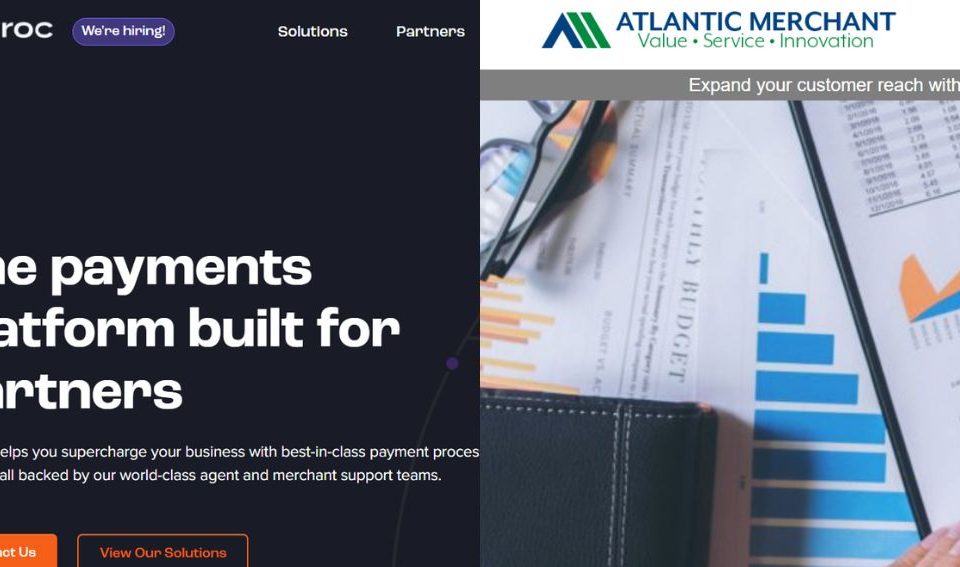8 Largest Conglomerate Mergers in History

The Ultimate Guide to Post-Merger (M&A) Integration Process
March 10, 2023
The Largest Mergers and Acquisitions Failures of All Time
March 10, 2023Conglomerate mergers refer to joining companies operating in different industries or business sectors, creating a diversified conglomerate corporation. These mergers are often pursued to achieve economies of scale, reduce risk, and expand into new markets. Conglomerate mergers have played a significant role in business history, with many of the world’s largest corporations being conglomerates. They have also significantly impacted the global economy, with some of the largest mergers involving multinational corporations from different countries. In this outline, we will explore the largest conglomerate mergers in history, their impact, and the future of such mergers.
Historical Overview of Largest Conglomerate Mergers
Berkshire Hathaway, led by Warren Buffet, is a multinational conglomerate holding company with a diverse range of subsidiaries in various industries, including insurance and reinsurance. General Re, a reinsurance company, was acquired by Berkshire Hathaway in 1998.
Comparison of the Mergers in Terms of Size, Impact, and Success
Size: The merger was worth $16.2 billion.
Impact: The acquisition expanded Berkshire Hathaway’s portfolio in the reinsurance industry.
Success: The merger has been considered successful, with Gen Re contributing to Berkshire Hathaway’s profits.
Significance of Merger
The acquisition of General Re was significant for Berkshire Hathaway as it expanded the company’s reach in the reinsurance industry, which is a strategic part of the insurance industry. The acquisition also brought significant financial benefits to Berkshire Hathaway, increasing its earnings and book value. The acquisition of General Re added to Berkshire Hathaway’s reputation and credibility in the insurance and financial industries, as General Re was considered one of the world’s leading reinsurers at the time of the acquisition.
Siemens AB and Varian Medical Systems
Siemens Healthineers, the medical technology division of Siemens AG, acquired Varian Medical Systems in 2020.
Comparison of the Mergers in Terms of Size, Impact, and Success
Size: The merger was worth $16.4 billion.
Impact: The acquisition expanded Siemens’ portfolio in the healthcare industry.
Success: The merger is still too recent to evaluate its success.
Varian Medical Systems is a leading supplier of medical devices and software for cancer treatment and diagnosis, while Siemens Healthineers specializes in medical technology for imaging, diagnostics, and laboratory equipment. The acquisition of Varian Medical Systems by Siemens Healthineers allowed the companies to combine their expertise and create a comprehensive portfolio of medical technology solutions for cancer care.
The merger provided Siemens Healthineers access to Varian’s cancer treatment and diagnosis expertise, including its radiation oncology systems, software, and artificial intelligence capabilities. The merger also helped Siemens Healthineers to expand its product offerings and geographic reach, particularly in the United States, where Varian has a significant market presence.
Significance of Merger
The merger is significant for the medical technology industry as it created a leading player in the global market for cancer care technology. The combined company has a comprehensive portfolio of products and services, and it can offer innovative solutions to improve cancer care outcomes and patient experiences.
United Technologies and Goodrich Corporation
United Technologies Corporation (UTC) acquired Goodrich Corporation in 2011. Goodrich Corporation was a leading supplier of systems and services to the aerospace and defense industries, while UTC is a multinational conglomerate specializing in aerospace, defense, and building systems.
Comparison of the Mergers in Terms of Size, Impact, and Success
Size: The merger was worth $18.4 billion.
Impact: The acquisition expanded United Technologies’ portfolio in the aerospace industry.
Success: The merger has been considered successful, with Goodrich contributing to United Technologies’ profits.
The acquisition of Goodrich by UTC was a strategic move to expand UTC’s aerospace business and product offerings, particularly in the areas of landing gear systems, flight controls, and engine components.
The merger allowed UTC to increase its market share in the aerospace industry and expand its customer base, particularly in commercial aviation. The acquisition also provided UTC access to Goodrich’s advanced technology and expertise in the aerospace and defense industries.
Significance of Merger
The merger is significant for the aerospace and defense industries, creating a leading player in the global aerospace systems and services market. The combined company has a comprehensive portfolio of products and services, and it can offer innovative solutions to improve the safety, efficiency, and sustainability of air travel.
Mars Inc. and Wrigleys
In 2008, Mars Inc. acquired Wrigley, the world’s leading chewing gum manufacturer.
Comparison of the mergers in terms of size, impact, and success
Size: The merger was worth $23 billion.
Impact: The acquisition combined two of the world’s largest confectionery companies.
Success: The merger has been considered successful, with the combined company expanding its product line and market share.
Mars Inc. is a global confectionery and pet food company, while Wrigley is a leading manufacturer of chewing gum and other confectionery products. The acquisition of Wrigley by Mars Inc. was a strategic move to expand the company’s product offerings and global market reach in the confectionery industry.
The merger allowed Mars Inc. to become the world’s largest confectionery company, with a comprehensive portfolio of products and brands, including popular chewing gum brands like Orbit, Extra, and Doublemint. The merger also provided Mars Inc. access to Wrigley’s extensive global distribution network and advanced technology in confectionery manufacturing.
Significance of Merger
The merger is significant for the confectionery industry as it created a leading player in the global market for sweets and snacks. The combined company has a strong presence in the United States, Europe, and other key markets, and it can leverage its scale and expertise to drive growth and innovation in the industry.
Berkshire Hathaway and Heinz
In 2013, Berkshire Hathaway, the multinational conglomerate led by Warren Buffett, acquired H.J. Heinz Company, the global food processing and distribution company.
Comparison of the Mergers in Terms of Size, Impact, and Success
Size: The merger was worth $23.3 billion.
Impact: The acquisition gave Berkshire Hathaway control over one of the largest food companies in the world.
Success: The merger has been considered successful, with Heinz contributing to Berkshire Hathaway’s profits.
Heinz is a leading manufacturer of packaged foods and condiments, with popular brands such as Heinz Ketchup, Kraft Mac & Cheese, and Ore-Ida frozen potatoes. The acquisition of Heinz by Berkshire Hathaway was a strategic move to expand the company’s presence in the food industry and acquire a strong portfolio of brands with global recognition.
The merger allowed Berkshire Hathaway to become a major player in the global food industry, with a diverse portfolio of brands and products. The merger also provided Berkshire Hathaway access to Heinz’s extensive global distribution network and advanced food processing and packaging technology.
Significance of Merger
The merger is significant for the food industry as it became a leading player in the global packaged foods and condiments market. The combined company has a strong presence in North America, Europe, and other key markets, and it can leverage its scale and expertise to drive growth and innovation in the industry.
Berkshire Hathaway and Burlington Northern Santa Fe
In 2009, Berkshire Hathaway, the multinational conglomerate led by Warren Buffett, acquired Burlington Northern Santa Fe (BNSF), one of the largest railroad operators in North America.
Comparison of the Mergers in Terms of Size, Impact, and Success
Size: The merger was worth $27 billion.
Impact: The acquisition gave Berkshire Hathaway control over one of the largest railroad networks in North America.
Success: The merger has been considered successful, with Burlington Northern Santa Fe contributing to Berkshire Hathaway’s profits.
BNSF operates one of North America’s largest freight railroad networks, focusing on intermodal and coal transportation. The acquisition of BNSF by Berkshire Hathaway was a strategic move to diversify the company’s portfolio and acquire a major player in the transportation industry.
The merger allowed Berkshire Hathaway to become a major player in the transportation industry, with a diverse portfolio of businesses, including freight rail, trucking, and logistics. The merger also provided Berkshire Hathaway access to BNSF’s extensive network of rail lines and advanced technology in rail transportation.
Significance of Merger
The merger is significant for the transportation industry, creating a leading player in the global freight rail and intermodal transportation market. The combined company has a strong presence in North America, able to transport goods across the continent efficiently and reliably.
United Technologies and Rockwell Collins
In 2017, United Technologies Corporation (UTC) acquired Rockwell Collins, Inc., a multinational aerospace and defense company.
Comparison of the Mergers in Terms of Size, Impact, and Success
Size: The merger was worth $30 billion.
Impact: The acquisition combined United Technologies’ expertise in aviation and defense with Rockwell Collins’ experience in avionics and communications.
Success: The merger has been considered successful, with the combined company now known as Raytheon Technologies.
Rockwell Collins is a leading manufacturer of aviation electronics and communications systems with a strong presence in the commercial and military aviation markets. The acquisition of Rockwell Collins by UTC was a strategic move to expand the company’s presence in the aerospace and defense industry and to acquire a strong portfolio of technologies and products.
The merger allowed UTC to become a major player in the aerospace and defense industry, with a diverse portfolio of businesses, including aircraft engines, avionics, and communication systems. The merger also provided UTC access to Rockwell Collins’ advanced technology and engineering capabilities and its extensive commercial and military aviation market customer base.
Significance of Merger
The merger is significant for the aerospace and defense industry, creating a leading player in the global aviation electronics and communications systems market. The combined company has a strong presence in the commercial and military aviation markets, able to provide integrated solutions to customers worldwide.
Berkshire Hathaway and Precision Castparts
In 2015, Berkshire Hathaway, led by Warren Buffett, acquired Precision Castparts Corp. (PCC), a leading manufacturer of complex metal components and products for the aerospace, power, and industrial markets.
Comparison of the Mergers in Terms of Size, Impact, and Success
Size: The merger was worth $37 billion.
Impact: The acquisition expanded Berkshire Hathaway’s portfolio in the manufacturing and aerospace industries.
Success: The merger has been considered successful, with Precision Castparts contributing to Berkshire Hathaway’s profits.
PCC is a global leader in manufacturing precision metal components and products for various industries, including aerospace, power, and industrial markets. The acquisition of PCC by Berkshire Hathaway was a strategic move to diversify the company’s portfolio and acquire a major player in the manufacturing industry.
Significance of Merger
The merger allowed Berkshire Hathaway to become a major player in the aerospace and industrial manufacturing industry, with a diverse portfolio of businesses, including precision metal components, industrial manufacturing, and aerospace products. The merger also provided Berkshire Hathaway access to PCC’s advanced technology and engineering capabilities and its extensive customer base in the aerospace and industrial markets.
The merger is significant for the manufacturing industry, creating a leading player in the global market for precision metal components and industrial products. The combined company has a strong presence in the aerospace and industrial markets, with the ability to provide integrated solutions to customers worldwide.
Significance of Conglomerate Mergers for Businesses and the Economy
Conglomerate mergers can offer several benefits to businesses, including access to new markets, diversification of revenue streams, and increased bargaining power with suppliers. These mergers can stimulate growth and job creation for the economy and spur innovation and technological advancement.
However, conglomerate mergers also have potential downsides, including the risk of reduced competition, increased market power, and decreased consumer choice. Integrating different businesses from different industries can be a challenging and complex process that may not always lead to success.
Final Thoughts on The Topic
Conglomerate mergers can be a significant force in shaping the global economy. While they offer many potential benefits for businesses and the economy, they also come with risks and challenges. As with any significant business decision, it is crucial for companies to carefully evaluate the costs and benefits of a merger before proceeding.




